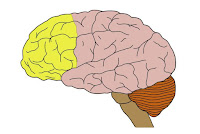Finding Which Behavior Problems to Target First: Tips for Parents of Kids on the Autism Spectrum

Your child with High-Functioning Autism (HFA) or Asperger’s (AS) seems to have a multitude of behavioral and emotional issues. Which ones should you attempt to address first? With so many problems, where do you start? A careful analysis of the most problematic symptoms is crucial, because the choice of interventions is influenced by symptom traits. Moreover, the wide array of symptoms results in the tendency of those closest to the HFA or AS youngster to lose sight, over time, of the intervention targets. When parents (and teachers) turn their attention to a new troubling cluster of symptoms, an intervention that has been effective may be reinterpreted as ineffective. Being attentive to symptom traits allows the parent to measure effects and introduce helpful responses. ==> Parenting System that Significantly Reduces Defiant Behavior in Teens High-Functioning Autism The most important traits to consider include the following: Distribution of the behavior problems Int




